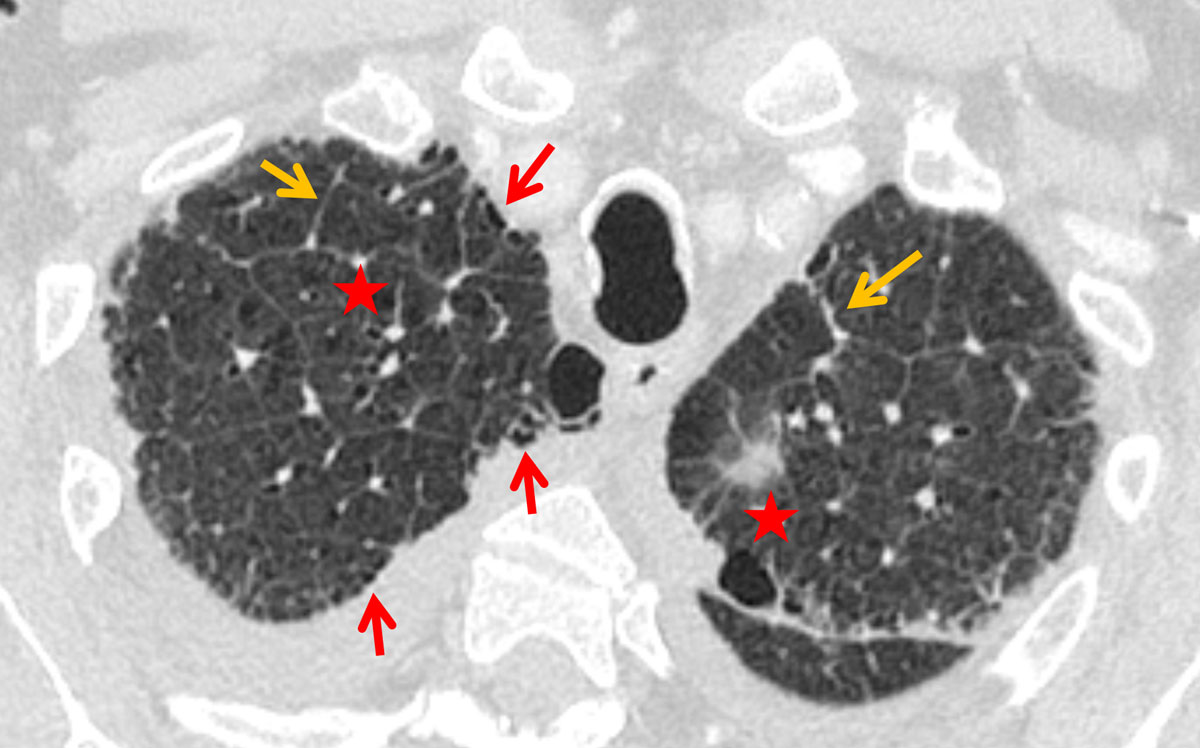
Kerley B lines in the lung apex a distinct CT sign for pulmonary congestion
Kerley B lines in a patient with congestive heart failure. Kerley B lines. These are short parallel lines at the lung periphery. These lines represent interlobular septa, which are usually less than 1 cm in length and parallel to one another at right angles to the pleura. They are located peripherally in contact with the pleura, but are.
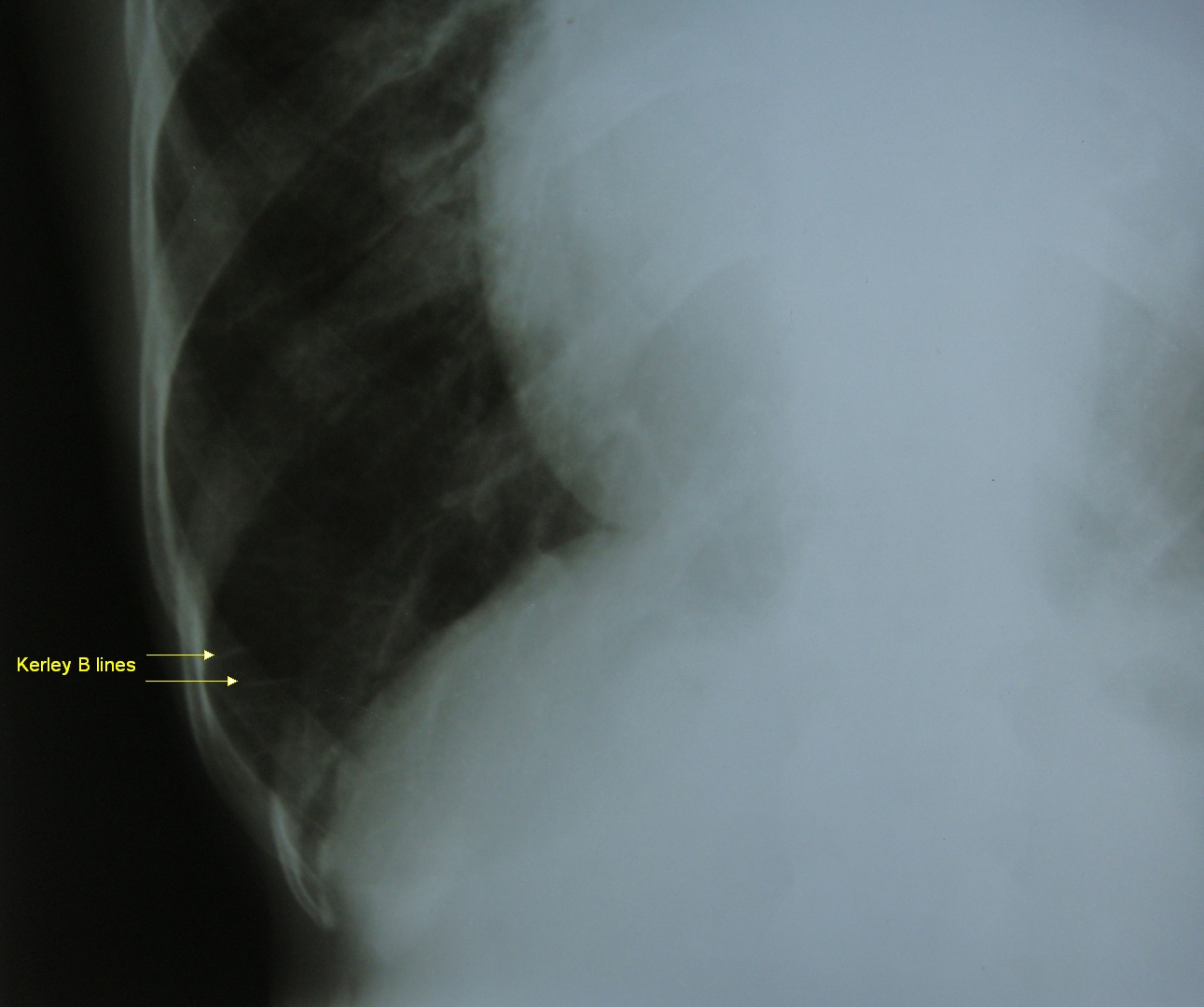
Kerley B lines Chest Xray « PG Blazer
Kerley's A lines, which radiate 2 to 4 cm from the hilum toward the pulmonary periphery and particularly toward the upper lobes ( Fig. 84-3 ), reflect thickening of the axial interstitial compartment and can be a feature of left ventricular failure or allergic reactions. Kerley's B lines, which reflect thickening of the subpleural interstitial.

What are the faint linear opacities on this AP chest Xray called? Core IM Podcast
Kerley B lines are short parallel lines at the lung periphery. These lines represent distended interlobular septa, which are usually less than 1 cm in length and parallel to one another at right angles to the pleura. They are located peripherally in contact with the pleura, but are generally absent along fissural surfaces. They may be seen in.

CASUS Online Medicine, Radiology, Neon signs
What are Kerley B Lines? We created this video to cover the medical definition and provide a brief overview of this topic.💥Kerley B lines [Full Guide].

Post Gad Pulmonary Edema & Kerley B lines
Kerley B lines are small, horizontal, peripheral straight lines demonstrated at the lung bases that represent thickened interlobular septa on CXR. They represent edema of the interlobular septa and though not specific, they frequently imply left ventricular failure. Kerley C lines are reticular opacities at the lung base, representing Kerley.
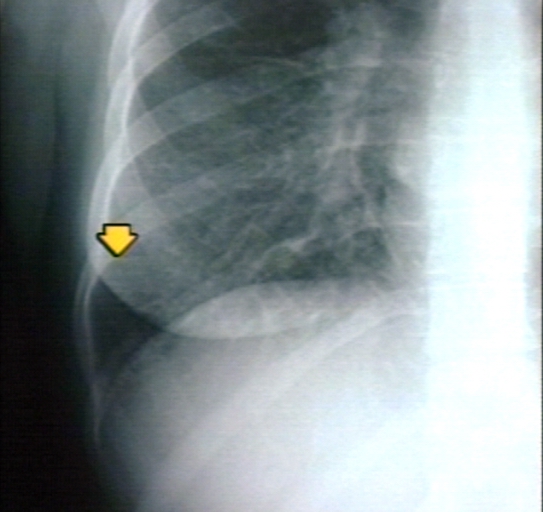
Kerley lines wikidoc
Kerley B Lines. These are horizontal lines less than 2cm long, commonly found in the lower zone periphery. These lines are the thickened, edematous interlobular septa. Causes of Kerley B lines include; pulmonary edema, lymphangitis carcinomatosa and malignant lymphoma, viral and mycoplasmal pneumonia, interstital pulmonary fibrosis.

Kerley B (septal) lines Image
Kerley B lines, or septal lines are a sign of interstitial oedema. They represent thickening of the interlobular septa of the periphery of the lungs. If you see Kerley B lines on a chest X-ray in suspected heart failure, then they are a very helpful sign to help diagnose interstitial oedema.
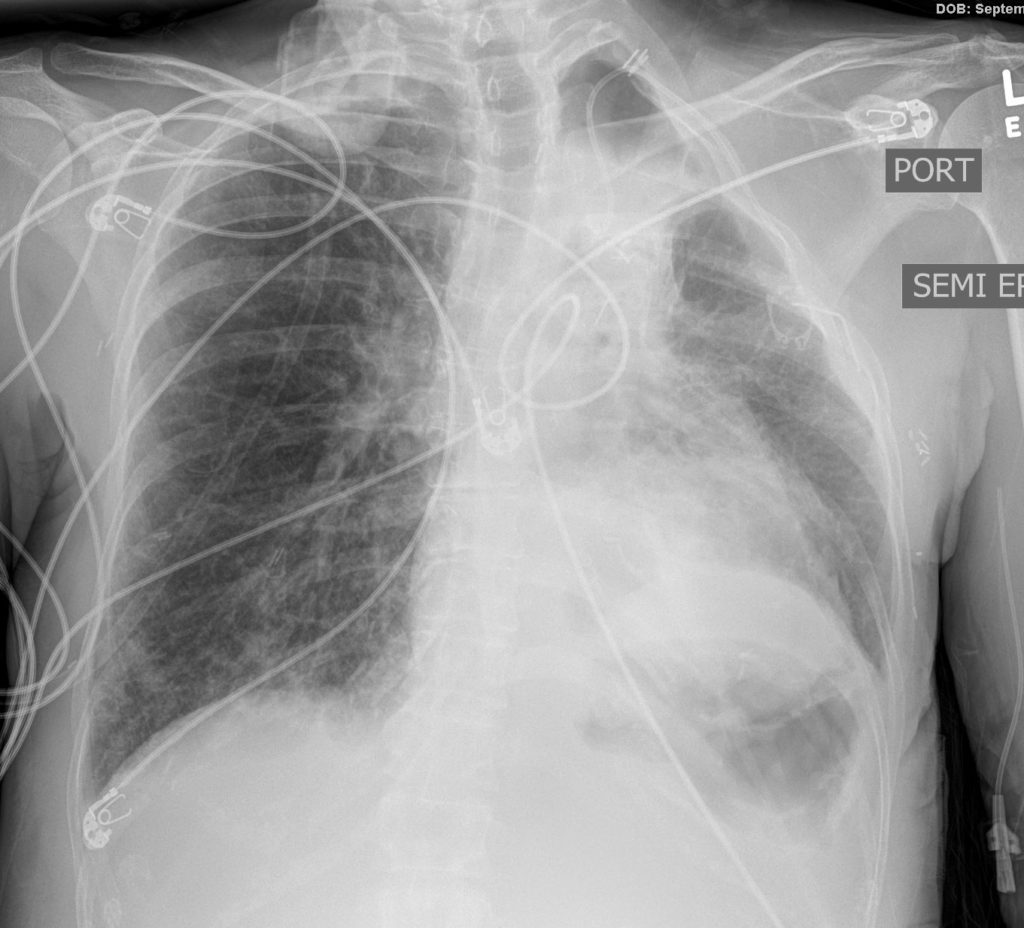
Kerley Lines Heart
Kerley B lines are linear opacities seen on the chest radiograph. They are 1-2 cm long horizontal lines which meet the pleura at right angles. They are typically seen as a ladder up the side of the lungs beginning at the costophrenic angle. Kerley B lines represent interlobular lymphatics which have been distended by fluid or tissue.
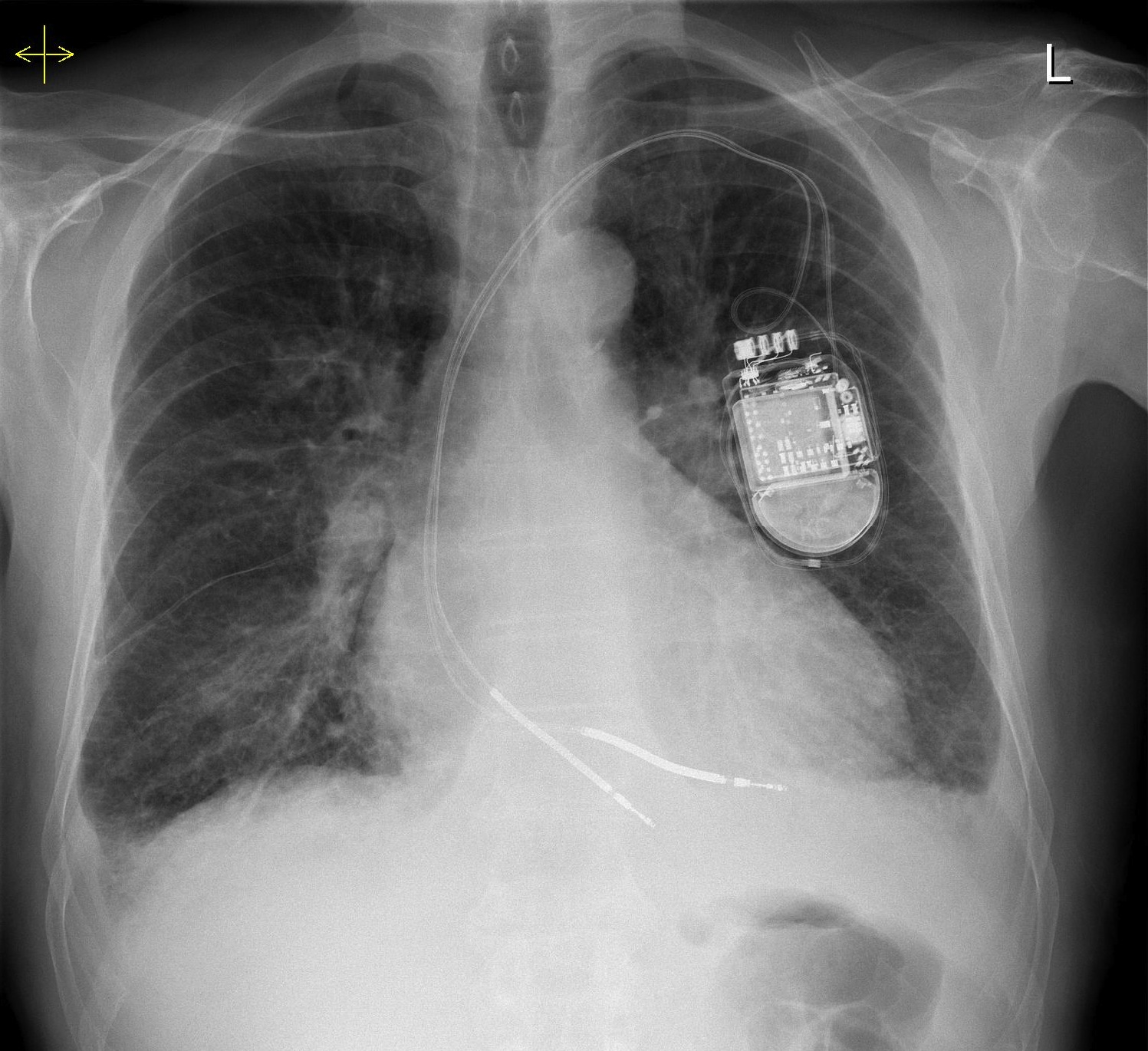
Kerley B Lines Cxr Septal lines in lung Radiology Reference Article They are thin
Plain radiograph. There are bilateral basal interstitial lines that extend to the pleural surface - these are septal (Kerley B) lines. There is slight asymmetry of the breast shadows and metallic clips in the right axilla. Features are consistent with previous breast carcinoma and lymphangitis carcinomatosis. I would compare this with previous.
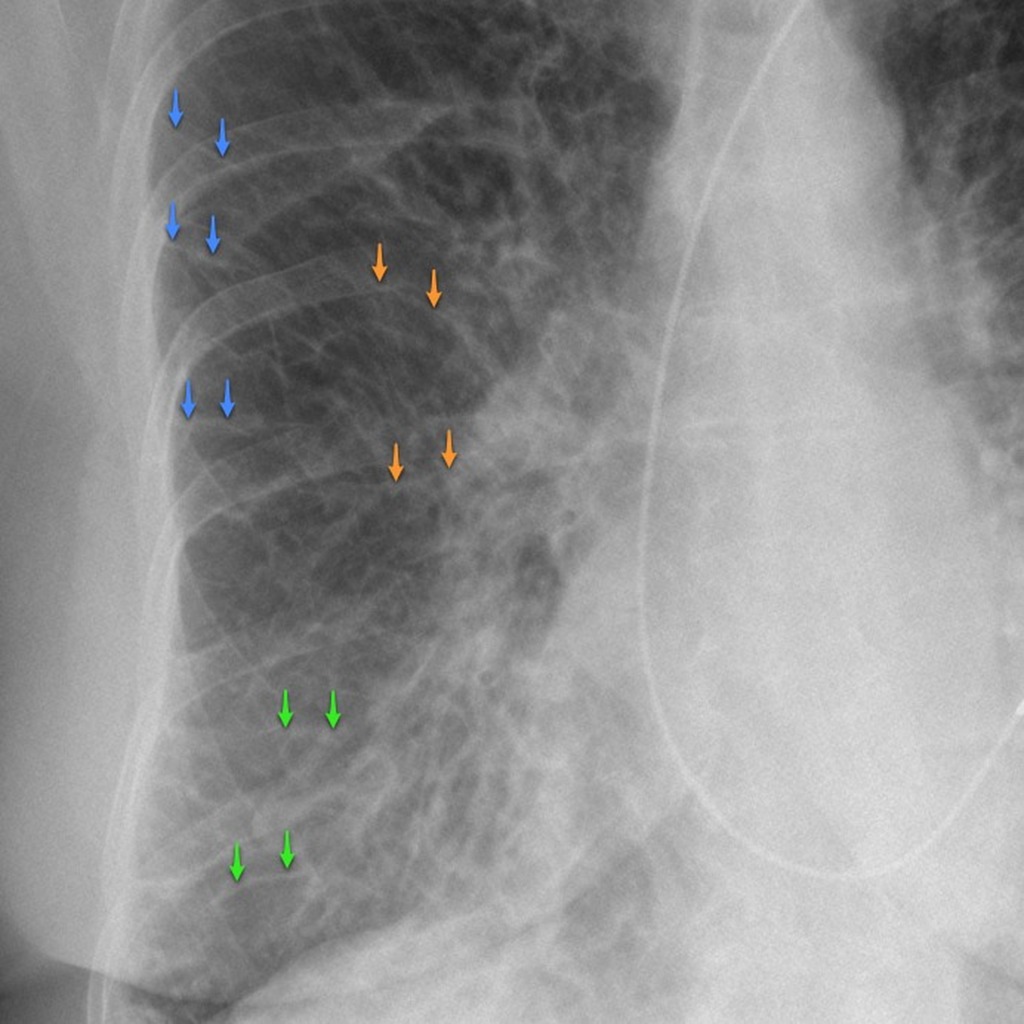
cxr stase Kerley B lines [This website has no commercial interest Only personal reflections]
Interlobular septal thickening (Kerley B lines) in the lung apex is a specific sign for pulmonary congestion, although not exclusive (since in ILD there may be apical reticulation). In combination with peribronchial cuffing and increased cardiothoracic ratio, it allows differentiation between cardiac/renal insufficiency and pulmonary ILD.

Acute pulmonary edema finding blue arrow indicates Kerley Blines and... Download Scientific
Case Discussion. The septal lines and ground-glass opacity are most suggestive of pulmonary edema. Be sure to look at the PA chest X-ray and the coronal CT images to better appreciate the appearance of Kerley B lines. Normal heart size is compatible with pulmonary edema. Diastolic dysfunction and non-cardiogenic pulmonary edema are examples of.
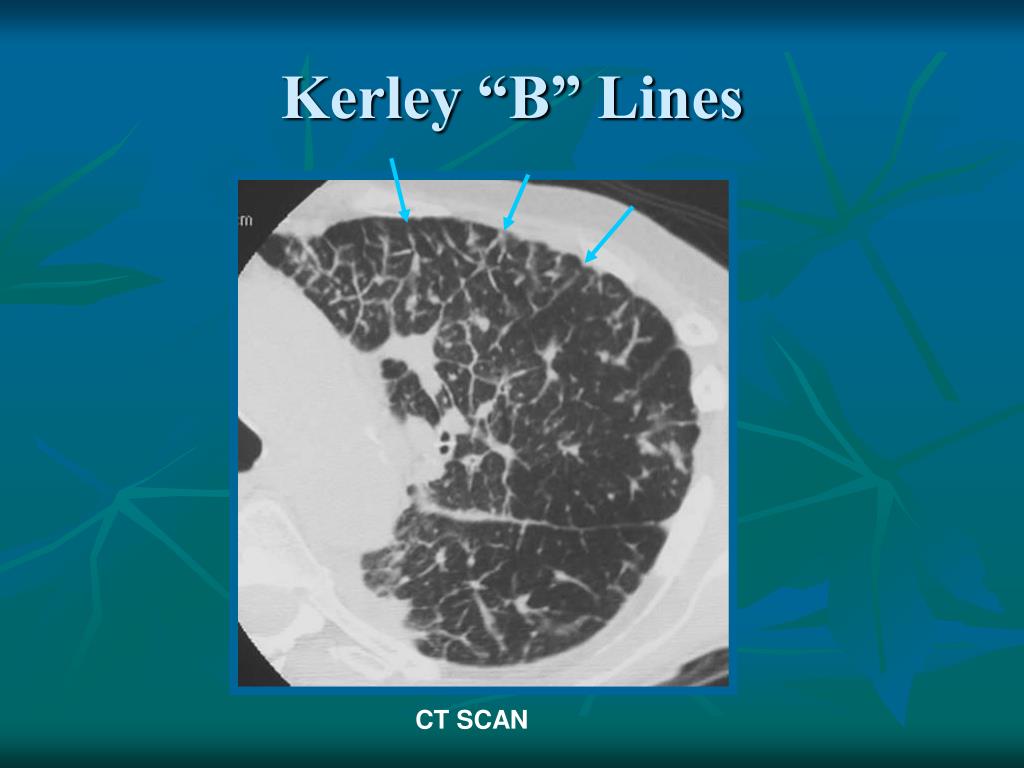
PPT Back to Basics Radiology 2010 PowerPoint Presentation, free download ID4201054
The characteristic appearance of Kerley B lines is due to the fluid-filled interlobular septa, the connective tissue structures that separate the lung's lobules. Causes of Kerley B Lines. Interstitial pulmonary edema is the primary cause of Kerley B lines. This condition occurs when fluid accumulates within the interstitial space of the lungs.

Kerley B lines on CT Image
Citation, DOI, disclosures and article data. Septal lines, or Kerley lines, are seen when the interlobular septa in the pulmonary interstitium become prominent. It may be because of lymphatic engorgement or edema of the connective tissues of the interlobular septa. They usually occur when pulmonary capillary wedge pressure reaches 20-25 mmHg.

PPT Diagnostic Radiology Congestive Heart Failure PowerPoint Presentation ID6637651
Kerley B lines (thickened interlobular septa) are much spoken about as a medical student, but less commonly observed than one might expect given the volume of cardiac failure patients. These thin lines of 1-2 cm are virtually always at the lungs bases and at the lung periphery lying perpendicular to the pleural surface to which they contact.
Kerley B Lines Cxr Septal lines in lung Radiology Reference Article They are thin
Kerley's A, B, and C Lines. Takeharu Koga, M.D., Ph.D., and Kiminori Fujimoto, M.D., Ph.D. A 59-year-old woman with hypertension and diabetic nephropathy presented with a sudden onset of dyspnea.

Image Kerley B Lines Merck Manuals Professional Edition
Kerley B Lines Kerley B lines (arrows) are horizontal lines in the lung periphery that extend to the pleural surface. They denote thickened, edematous interlobular septa often due to pulmonary edema.